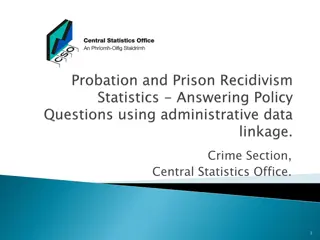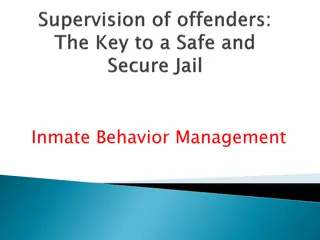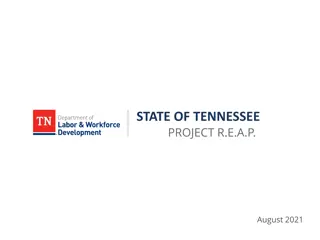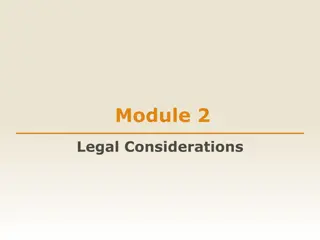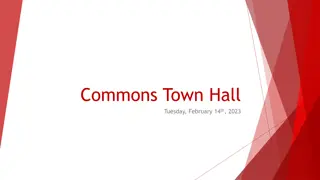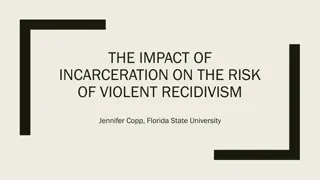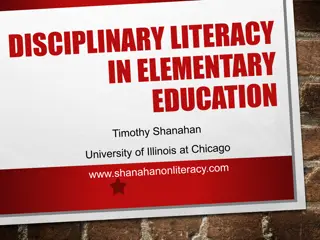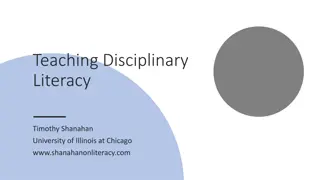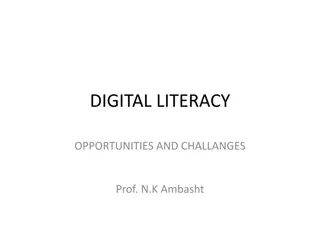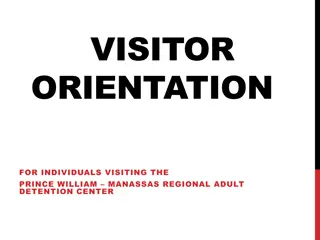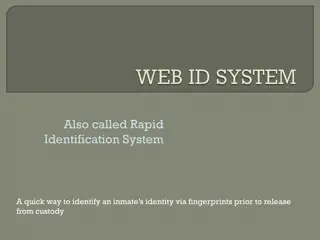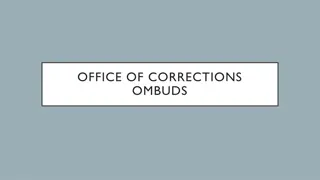Addressing Inmate Recidivism Through Literacy Education
Over half of inmates in American prisons struggle with low literacy levels, hindering their chances of successful reintegration into society. Providing effective literacy instruction can significantly reduce recidivism rates. Challenges such as varied reading levels and limited resources need to be addressed to create a successful educational program. Reading Horizons offers a proven methodology that has been utilized in various state prison systems, demonstrating significant reading level gains and empowering teachers to support struggling readers effectively.
Uploaded on Sep 13, 2024 | 0 Views
Download Presentation

Please find below an Image/Link to download the presentation.
The content on the website is provided AS IS for your information and personal use only. It may not be sold, licensed, or shared on other websites without obtaining consent from the author. Download presentation by click this link. If you encounter any issues during the download, it is possible that the publisher has removed the file from their server.
E N D
Presentation Transcript
BREAKING THE CYCLE OF INMATE RECIDIVISM August 1, 2013
Literacy Statistics Over half of the inmates in America s prisons cannot read above a fourth-grade level. Inmates have a 35% less chance of returning to prison if they receive literacy instruction.
Your Needs Individuals have past failures, which contribute to demotivation, embarrassment, and negative attitudes toward education Different reading levels exist among inmates, which pose difficulties in identifying skill deficits Getting instructors / tutors trained in methodology that is effective, efficient, and practical Lack of time for one-on-one instruction, especially due to being short-staffed Providing age-appropriate materials
Your Needs (cont.) Turnover rates; individuals in and out Lack of computers / technology; lack of internet access; security restraints English Language Learners needs, including native Spanish-speakers Loss of growth data / reporting when inmates are transferred to a new facility Addressing the needs of students with learning disabilities and special needs
What Is Reading Horizons? Explicit, systematic, sequential, multi-sensory literacy instruction Proven methodology that is age-appropriate Provides quick reading-level gains Direct instruction materials and software provide individualized instruction Average student sees gains of two to three grade levels after 60 hours of instruction (typically over a six-month time frame) Teacher training, teacher manuals, and interactive software empowers teachers to effectively teach struggling readers, including students with learning disabilities, and English Language Learners.
History of Reading Horizons in Corrections Used in over 20 state prison systems California Inmate Literacy Project
California Inmate Literacy Project Reading Horizons was selected by California State University from among 24 other bids for use in the California Inmate Literacy Project. Inmates enrolled in Reading Horizons included native English speakers and ESL students testing at or below the fourth-grade reading level upon entry. The data available shows inmates made noticeable progress in this program. Tool: The WRAT (Wide Range Achievement Test) Timeframe: Three-year longitudinal study
California Corrections 5 4.5 4 Institution #1 3.5 Institution #2 3 Grade Levels Institution #3 2.5 2 Institution #4 1.5 1 0.5 0 6 Month Gains 3 Year Average California State University, Sacramento
Dr. Frances Tracy-Mumford At first we used Reading Horizons as a tack on to another program, but we all started getting such good results that it became a staple for all of our correctional programs. It really helps with a whole host of writing, spelling, and reading problems for both lower level and higher level students.
Q & A For additional questions, call 1-800-333-0054. Rob Openshaw Rob.openshaw@readinghorizons.com


